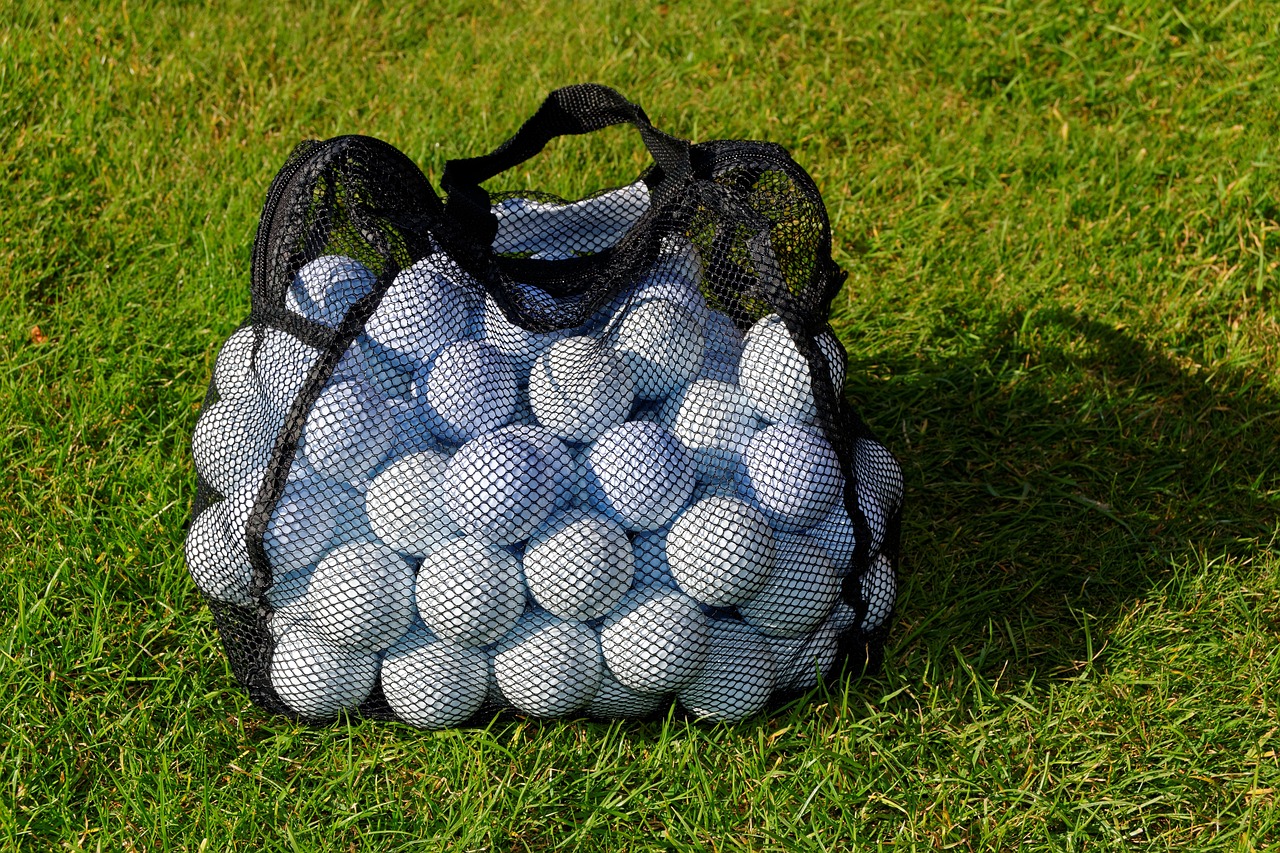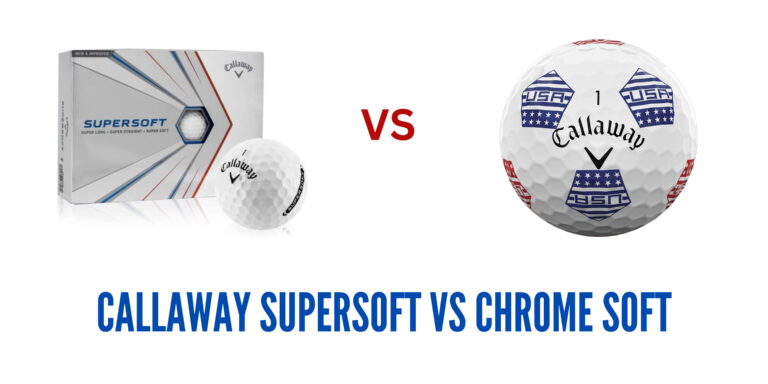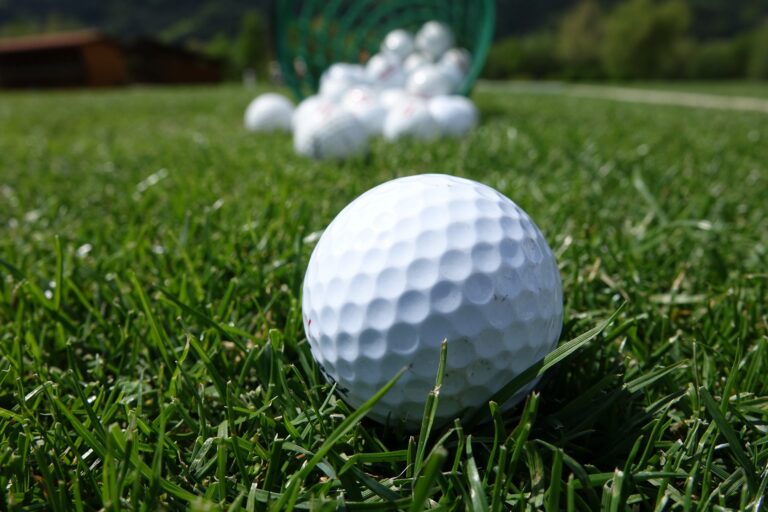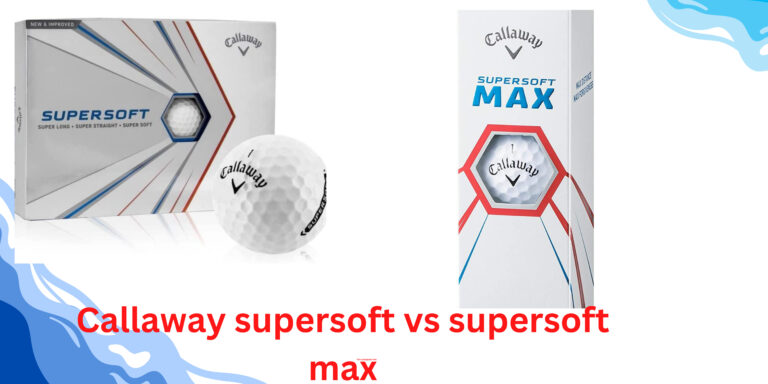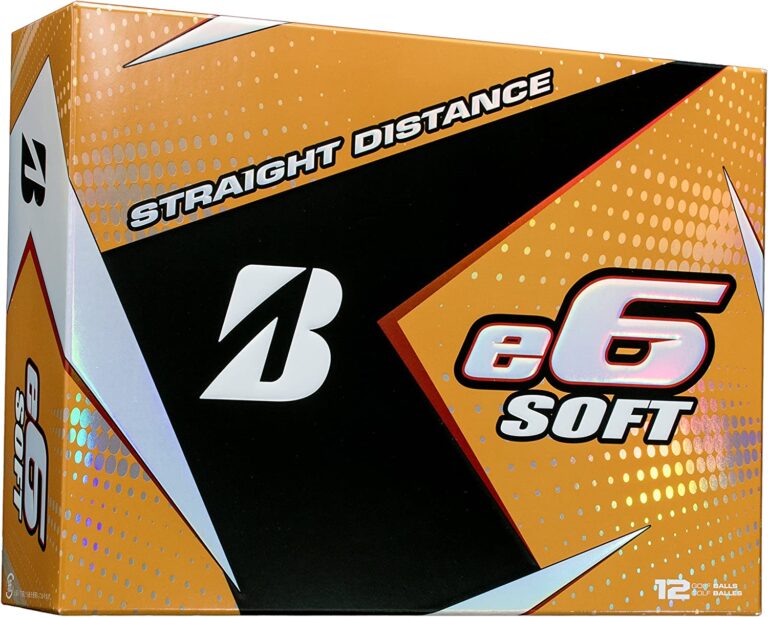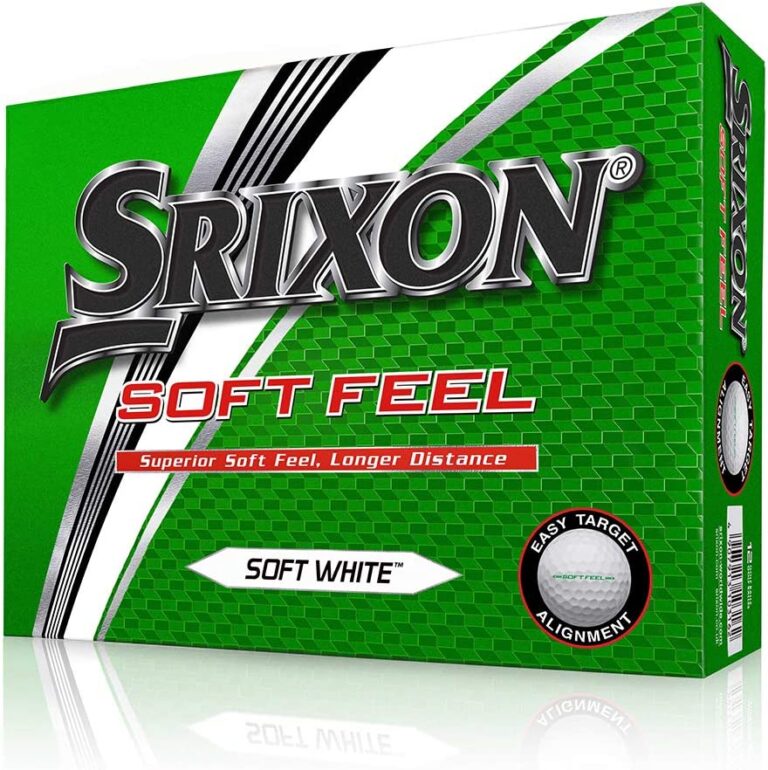What are the different types of golf balls?
Golf is a sport that requires precision, skill, and the right equipment. Among the essential tools in a golfer’s arsenal is the golf ball. With advancements in technology, golf balls have evolved, catering to different playing styles and preferences.
In this comprehensive guide, we will delve into the world of golf balls, exploring the various types, their characteristics, and how they impact your game. So, if you’ve ever wondered, “What are the different types of golf balls?” you’re about to find out.
What are golf balls made of?

The composition of a golf ball significantly affects its performance on the course. Typically, golf balls have a core made of rubber or similar synthetic materials, covered by a durable, often urethane-based, outer layer.
However, the exact construction varies among the different types of balls, each designed to provide unique playing characteristics.
Why choose the right golf ball type?
Choosing the right type of golf ball for your game is crucial for optimizing your performance. Each type offers different levels of spin, control, distance, and feel. Therefore, the correct ball can complement your style of play and help you achieve lower scores.
Different Types of Golf Balls
Golf balls come in various types, each designed to suit a particular style of play.
1. Two-Piece Golf Balls.
Two-Piece golf balls are typically the most common type of golf balls found on the market, often chosen for their durability and maximum distance.
They’re perfect for beginners and casual players and are the ideal choice for those with slower swing speeds. The construction of a two-piece golf ball consists of a solid inner core, usually made of hard plastic, surrounded by a durable cover, typically made of Surlyn.
This design promotes distance and lower spin on your drives, helping to reduce slices and hooks in your game.
While they may lack the soft feel and spin control of multi-layer balls, their affordability, long-lasting durability, and distance-focused design make them a practical choice for many players.
Example of a Two-Piece Golf Ball: Titleist TruFeel.
The Titleist TruFeel is a fantastic example of a high-quality two-piece golf ball. Designed with a larger, low-compression TruTouch core and a TruFlex cover, it provides excellent distance on the fairway and a soft feel around the green.
Despite being a two-piece ball, it features Titleist’s proprietary TruFit aerodynamics, offering improved flight consistency. The TruFeel represents a perfect blend of performance and value for golfers prioritizing distance and durability.
2. Three-Piece Golf Balls
Three-Piece golf balls, as the name suggests, consist of three layers: a solid rubber or liquid core, an enhanced rubber or liquid-produced layer, and a soft urethane or Balata cover. The design of these balls allows for greater control and spin compared to two-piece balls.
Three-piece golf balls are favored by mid-handicap players and golfers who desire more control over their shots.
While they offer greater feel and spin, they may not provide as much distance as two-piece golf balls. However, the added spin can significantly enhance the ball flight, and the softer cover provides a better feel, especially on shots around the green.
The three-piece design offers a great balance between distance, control, and feel, making these balls suitable for a wide range of golfers. They might be a bit more expensive than two-piece balls, but they can help improve your game as your skills progress.
Example of a Three-Piece Golf Ball: Callaway Chrome Soft
The Callaway Chrome Soft is an excellent example of a high-performance three-piece golf ball. It features a Graphene-infused Dual SoftFast Core for enhanced distance and control, and a larger inner core maximizes compression energy while minimizing driver spin to promote high launch for long distances.
Its thin ultra-soft Tour Urethane Cover feels fantastic and generates shot-controlling, stroke-saving spin on pitches and chips.
These features make the Chrome Soft a popular choice among golfers seeking to enhance their performance on the course.
3. Four-Piece Golf Balls
Four-piece golf balls are designed for advanced players who demand the best performance from their equipment. As the name suggests, these balls consist of four distinct layers, each serving a unique purpose.
The inner core is typically designed for explosive distance, while the next layer transfers the energy from the strike to the core, ensuring efficient energy transfer.
The third layer is usually thinner, functioning to increase spin and feel for better control on shorter shots and around the green. Finally, the outer cover is made from soft urethane to provide a soft feel and excellent spin control.
While four-piece golf balls can be more expensive, they offer a combination of distance, control, and spin that many skilled players seek.
Example of a Four-Piece Golf Ball: TaylorMade TP5
The TaylorMade TP5 is a perfect example of a high-quality four-piece golf ball. The TP5 features a Tri-Fast Core and Dual-Spin Cover that combine to perform exceptionally well with every club in your bag.
The unique 4-layer construction with a Soft-Tough Cast Urethane cover provides maximum greenside spin, giving the player added control where it’s needed most. Its innovative design makes it a favorite among golfers seeking maximum performance.
4. Five-Piece Golf Balls.
Five-piece golf balls are the pinnacle of golf ball technology and design, offering golfers superior control, feel, and distance. They are specifically engineered for professional golfers and low handicappers who need precise control and high spin rates.
These balls feature five distinct layers, each contributing to different aspects of performance. The innermost core is designed for optimizing launch and reducing spin for maximum distance.
The subsequent layers work to provide a gradual transition of energy from the club face to the core, as well as increasing spin on mid-iron shots for optimal control.
The outer cover is typically made of a highly durable and soft urethane material, providing exceptional feel and spin around the greens.
Despite the high price point, the performance benefits of five-piece golf balls make them a worthwhile investment for players seeking every advantage on the course.
Example of a Five-Piece Golf Ball: TaylorMade TP5x.
The TaylorMade TP5x is a leading example of five-piece golf ball technology. Featuring a Tri-Fast Core and Dual-Spin Cover that provides a unique contrast of explosive distance and maximum control, it’s a favorite among many professional golfers.
It’s designed to produce high launch and low spin on long shots, while the opposite is true on short irons and wedges, providing excellent control when it’s needed the most. The soft urethane cover also ensures a great feel on all shots.
Other Types of Golf Balls.
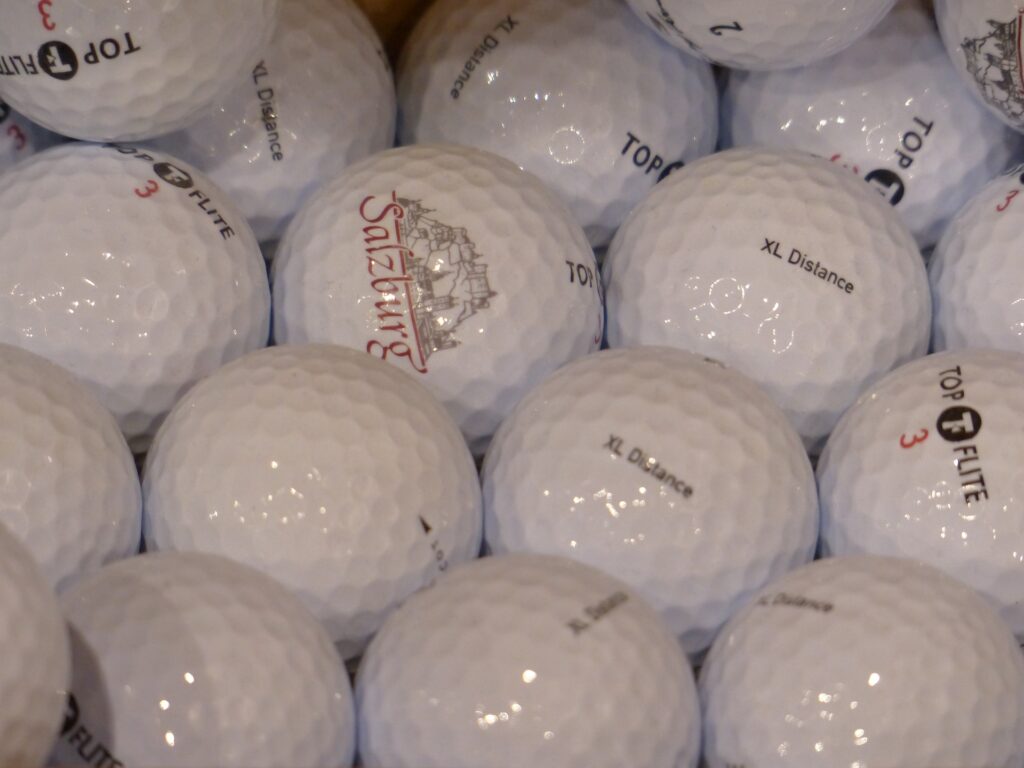
5. Recycled/Refinished Golf Balls.
These are used golf balls that have been cleaned and restored for reuse. They’re a good eco-friendly option and can help you save money.
6. Distance Balls: Maximizing Your Drive.
When it comes to maximizing distance off the tee, distance balls are the go-to choice for many golfers.
These balls are specifically designed to reduce spin and promote greater carry and roll. The core of a distance ball is usually larger and made of a high-energy material, allowing it to compress more upon impact, resulting in increased distance.
Notable features of distance balls include:
- Low spin: This reduces side spin, resulting in straighter shots and enhanced distance.
- Firm feel: Distance balls often have a firmer feel, offering more feedback to the golfer upon impact.
- Durable cover: The cover of a distance ball is designed to withstand high-velocity shots and resist wear and tear.
Popular distance ball options in the market include Titleist Velocity, Callaway Chrome Soft X LS, and TaylorMade Distance+.
7. Tour Balls: Precision for the Pros.
If you’re an advanced golfer seeking optimal control and feel around the greens, tour balls are the way to go. Thes
e balls are designed for professionals and low-handicap players who prioritize shot shaping, spin control, and exceptional greenside performance. Tour balls are often softer and provide excellent feedback on touch shots.
Key features of tour balls include:
- Soft feel: Tour balls have a softer feel, allowing golfers to better gauge the ball’s interaction with the clubface.
- High spin: Increased spin helps skilled players manipulate the ball’s trajectory and control its landing.
- Urethane cover: The cover of tour balls is typically made of urethane, providing superior greenside control.
Renowned tour ball options include Titleist Pro V1, TaylorMade TP5, and Callaway Chrome Soft.
8. Multi-Layer Balls: Balancing Distance and Control
Multi-layer golf balls are engineered for players who desire a balance between distance and control. These balls consist of a soft inner core surrounded by one or more mantle layers and a thin urethane cover.
The layering design allows golfers to enjoy the benefits of distance off the tee while maintaining greenside control and spin.
Salient features of multi-layer balls include:
- Dual-core construction: Multi-layer balls often have a soft inner core and a firmer outer core, optimizing energy transfer for both distance and control.
- Mid-to-high spin: These balls offer a balance of spin, allowing skilled golfers to shape shots and stop the ball on the green.
- Responsive cover: The urethane cover of multi-layer balls provides a soft feel and enhanced greenside control.
Renowned multi-layer ball options include Titleist Pro V1x, TaylorMade TP5x, and Callaway Chrome Soft X.
9. Low Compression Balls: Ideal for Slower Swing Speeds
For golfers with slower swing speeds, low-compression balls are a game-changer. These balls are designed to compress easily upon impact, resulting in higher launch angles and increased distance.
The lower compression helps maximize energy transfer and achieve optimal performance for players with moderate swing speeds.
Key attributes of low-compression balls include:
- High launch: The low compression allows these balls to launch higher, maximizing carry distance.
- Soft feel: Low compression balls provide a soft feel upon impact, enhancing overall playability.
- Forgiving nature: These balls minimize side spin and correct off-center hits, providing better accuracy.
Popular low-compression ball options include Srixon Soft Feel, Bridgestone e12 Soft, and Wilson Staff Duo Soft.
10. High Compression Balls: Power for Fast Swing Speeds
High-compression balls are tailored for golfers with faster swing speeds seeking maximum power and control.
These balls are designed to withstand the force generated by high-velocity swings, resulting in lower spin rates and increased ball speeds. They provide a solid feel and work well for players who can generate ample clubhead speed.
Key features of high-compression balls include:
- Lower spin: High compression balls reduce spin, promoting a more penetrating ball flight and greater roll.
- Increased ball speed: The firm construction of these balls leads to higher initial ball speeds off the tee.
- Enhanced control: Golfers with fast swing speeds can manipulate the ball with precision, achieving optimal shot shaping.
Prominent high-compression ball options include Titleist Pro V1x, Callaway Chrome Soft X, and TaylorMade TP5x.
11. Colored Golf Balls: Adding Fun and Visibility
Colored golf balls have gained popularity for their visual appeal and enhanced visibility on the course.
While traditional white golf balls dominate the market, colored balls offer a refreshing change and can be easier to track in the air and locate on the ground. They come in a variety of vibrant hues, allowing golfers to express their individuality.
Benefits of colored golf balls include:
- Visibility: Colored balls are easier to spot against different backgrounds, especially in low-light conditions.
- Personalization: Golfers can choose their favorite color or opt for high-visibility shades, making their ball stand out.
- Unique experience: Playing with colored balls adds a touch of fun and novelty to the game.
Popular colored ball options include Volvik Vivid, TaylorMade TP5 Pix, and Callaway Superhot Bold.
12. Practice Balls: Improving Skills without Sacrificing Performance
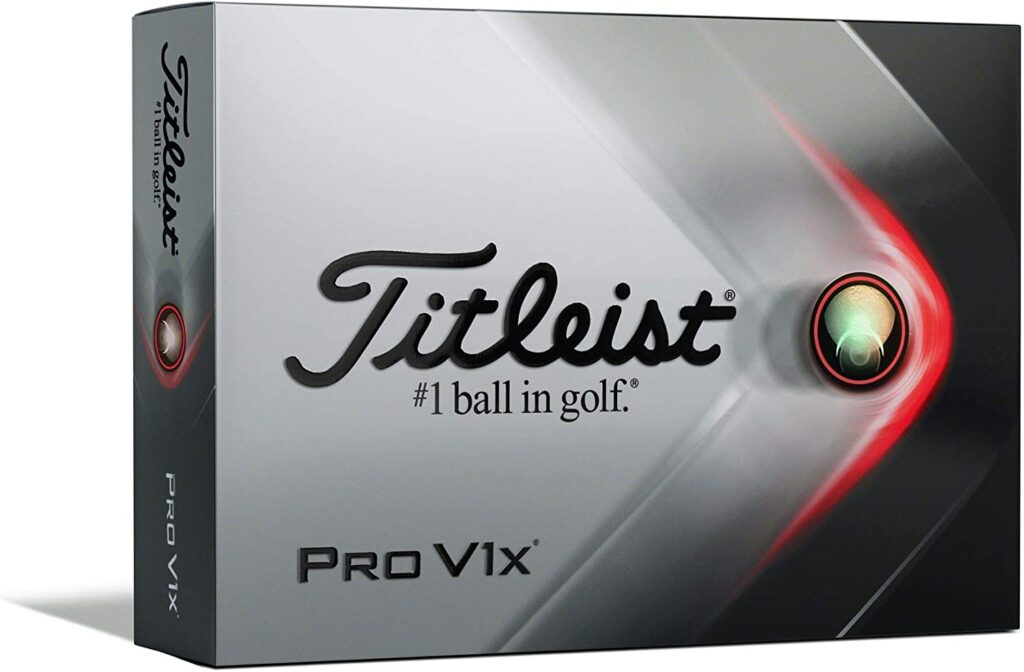
Practice balls are designed to provide golfers with an affordable option for honing their skills on the range or practice area.
While they may not offer the same performance as premium balls, they allow players to work on their swing, trajectory, and distance control without worrying about losing expensive balls.
Key characteristics of practice balls include:
- Cost-effective: Practice balls are often more affordable than standard golf balls, making them suitable for extensive practice sessions.
- Durable construction: These balls are designed to withstand repeated hits and endure rough surfaces.
- Similar feel: Practice balls aim to replicate the feel and performance of regular golf balls, allowing golfers to practice with realistic feedback.
- Various options: Practice balls are available in different types, including distance, foam, and limited-flight balls, catering to specific practice needs.
Noteworthy practice ball options include Callaway HX Practice Balls, Almost Golf Balls, and PrideSports Practice Golf Balls.
13. Women’s Golf Balls: Optimized for Female Golfers
Women’s golf balls are specifically designed to accommodate the unique swing characteristics and preferences of female golfers.
These balls often feature lower compression, softer feel, and a focus on control and distance. They are engineered to help women achieve optimal performance and enhance their overall playing experience.
Key features of women’s golf balls include:
- Lower compression: Women’s golf balls have lower compression to suit the slower swing speeds of many female players.
- Soft feel: These balls provide a softer feel upon impact, enhancing playability and feedback.
- Designed for control: Women’s golf balls focus on control and accuracy, helping female golfers achieve optimal results.
Prominent women’s golf ball options include Bridgestone Lady Precept, Callaway Solaire, and Titleist Velocity Pink.
14. Premium Golf Balls: Unleashing Top-of-the-Line Performance.
Premium golf balls represent the pinnacle of golf ball technology and performance. These balls are designed for professionals, low-handicap players, and those seeking the utmost in distance, control, and feel.
Premium balls often incorporate advanced features and materials, delivering exceptional performance on every shot.
Key characteristics of premium golf balls include:
- Multi-layer construction: Premium balls utilize intricate layering designs to optimize performance and provide a balanced combination of distance and control.
- Advanced cover materials: These balls often feature urethane or other high-performance materials, delivering superior greenside control and spin.
- Customization options: Some premium ball models offer customization features, allowing golfers to personalize their balls with custom logos or initials.
Renowned premium ball options include Titleist Pro V1, TaylorMade TP5, and Callaway Chrome Soft.
FAQs about Different Types of Golf Balls.
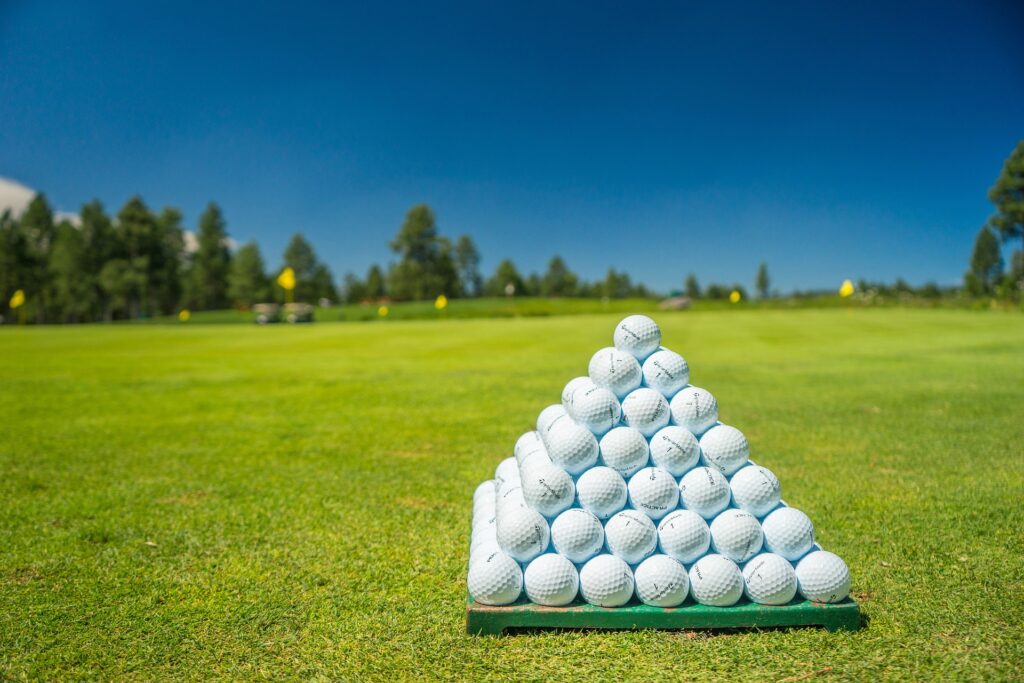
Can I use a tour ball if I’m a beginner?
While tour balls are primarily designed for skilled players, beginners can use them. However, beginners may find distance or two-piece balls more forgiving and suitable for their game.
Are colored golf balls legal for tournament play?
Yes, colored golf balls are allowed in tournament play as long as they conform to the rules and regulations set by the governing bodies.
Are women’s golf balls only for women?
Women’s golf balls are designed to accommodate the swing characteristics of many female players. However, male golfers with slower swing speeds can also benefit from using women’s golf balls.
How do I choose the right golf ball for my game?
Consider factors such as your skill level, swing speed, playing style, and personal preferences. Experimenting with different types of golf balls and seeking professional advice can help you find the ball that suits you best.
Can practice balls damage my clubs?
Practice balls are designed to be durable and minimize the risk of damaging clubs. However, it’s still important to inspect your clubs regularly and ensure there are no signs of excessive wear or damage.
Can using a specific type of golf ball improve my game?
Using a golf ball that matches your playing style and preferences can have a positive impact on your game. However, it’s important to note that the golf ball is just one component, and overall skill and technique play significant roles in your performance.
Conclusion
Choosing the right golf ball is crucial for optimizing your performance on the course. With a wide range of options available, understanding the different types of golf balls and their characteristics is essential.
Whether you prioritize distance, control, feel, or a combination of these factors, there is a golf ball tailored to your needs. By considering factors such as your skill level, swing speed, and personal preferences, you can select the perfect golf ball that enhances your game and brings you closer to achieving your golfing goals.
So, explore the options, experiment, and enjoy the game with the perfect golf ball for you.

